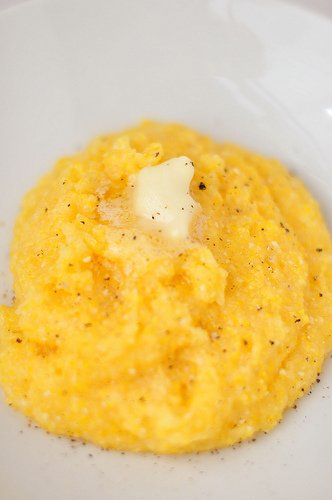Can you freeze polenta? Polenta is an Italian dish made by boiling cornmeal that’s been seasoned with cheese, herbs, and spices. This dish is enjoyed similarly to porridge when piping hot or as a loaf that can be fried, baked or grilled when cold. Just like most cornmeal-based dishes, polenta will freeze wonderfully. This means you can make polenta ahead of time and serve it each time the craving for it strikes! When frozen and reheated, polenta can be served as a quick lunch or as a light dinner.
Storage and Cooking Tips
To shorten the cooking time, try this trick: pre-soak the polenta in its liquids for several hours prior to cooking. Keeping the cornmeal hydrated ensures quicker cooking time.
When cooking the polenta, the consistency should be similar to that of scrambled eggs: soft, moist, creamy and barely liquid. It shouldn’t be sticky or too runny. The key to getting the consistency right is to check the ratio between the liquids and the cornmeal.
When making fresh polenta at home, you have to wait until the dish cools down completely before prepping it for freezing. You want to freeze the polenta as soon as possible to retain its original flavor and color. While you can pack a large batch of polenta using a single container, it is best to divide the dish into manageable portions so thawing won’t be problematic at all.
If you are making polenta ahead of time with plans of freezing it after, do not add the cream, cheese, butter, and other seasonings. Just boil the polenta in stock or water and that’s it. You can add the rest of the ingredients once you are ready to reheat the dish.

When frozen, polenta made with heavy cream won’t retain its original consistency compared to polenta that’s simply boiled in water or stock. That’s because the milk solids tend to separate from the rest of the ingredients. If you are freezing leftovers, we don’t recommend storing this in a single container, you have to cut the dish into serving portions to minimize the risk of separation between ingredients.
How to Freeze Polenta?
Start by pouring the freshly cooked polenta on a parchment lined shallow dish. As the polenta cools, it will solidify. Using a sharp knife, cut the polenta into equal sizes. Wrap each piece in cling wrap or parchment paper, making sure there are no exposed parts.
After wrapping the polenta portions, place them in a heavy-duty resealable plastic bag. Squeeze out as much air as possible before sealing then write the storage date. Store flat in the freezer.
If you are pressed for time, just stick the parchment-lined shallow dish in the fridge first to quickly set the cooled polenta. Then you can proceed with cutting and packing the polenta portions for freezing.
The 5 Different Types of Polenta
Think polenta is made equally? Not so. There are different types of polenta on the market and each one has unique characteristics.
Bramata
Bramata is perhaps the most recognizable form of polenta. It’s rustic with a delicious mouthfeel because the corn flour is stone-milled. Since it is moderately coarse, Bramata is versatile. You can bake the Bramata polenta, grill it or pan-fry it!
Fioretto
This product is best used in baking. It is finely grounded with a creamy, smooth mouthfeel. Fioretto can be used as a frying batter for meats. You can use this to make cakes, biscuits, and pancakes.
Bianca
Bianca is a finely grounded white polenta with a mild flavor and a smooth consistency. Since it has a mild flavor, this polenta will pair well with dishes with delicate flavors, such as seafood-based dishes.
Taragna
Polenta Taragna is not made purely of cornmeal but mixed with ground buckwheat. The added buckwheat gives this product a boost of nutrients. Taragna has a coarser, heartier consistency with a distinct flavor. This type of polenta pairs well with saucy, flavorful, and savory dishes.
Integrale
Polenta Integrale is made from wholegrain cornmeal. It boasts a complex flavor and a coarser consistency since it is not finely grounded. Since Integrale is not as refined as other polenta types, it offers a host of nutrients that other polenta types do not.

Shelf Life, Thawing, and Reheating Suggestions
Frozen polenta will keep for at least 3 months in the freezer. However, it is best to consume the dish in two weeks or less for optimal flavor.
To thaw the polenta, just remove the container from the freezer, unwrap the frozen polenta and leave it to sit at room temperature until thawed but cold. As the polenta thaws, blot the moisture with a paper towel. Once it’s ready, you can reheat the polenta in a pan over high and pan fry until golden brown.
Summary
Can you freeze polenta? You can! If you are craving for this yummy dish, why not make it ahead of time and just freeze it for later? No need to worry about spoilage at all, you can make a large batch of polenta and save everything for future meals.